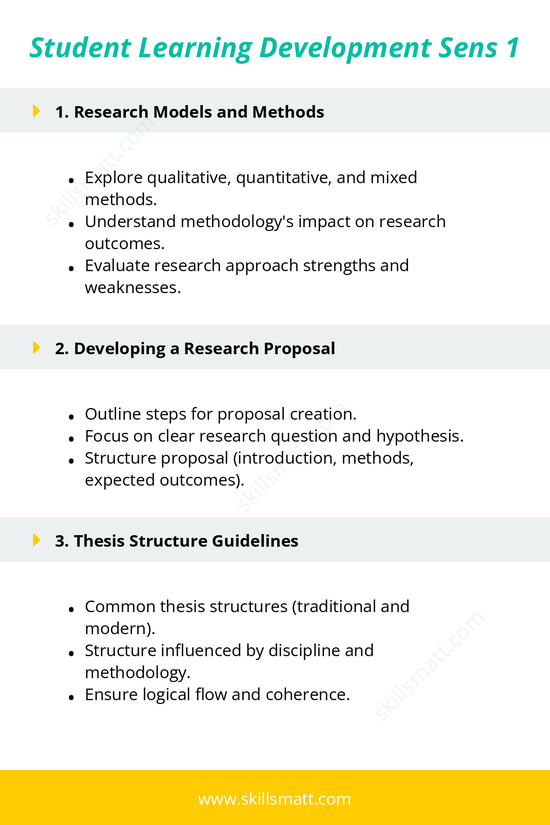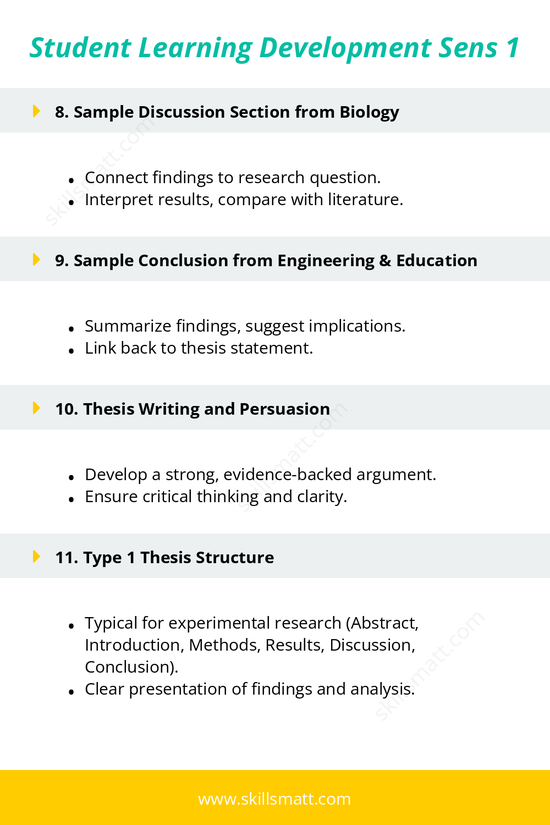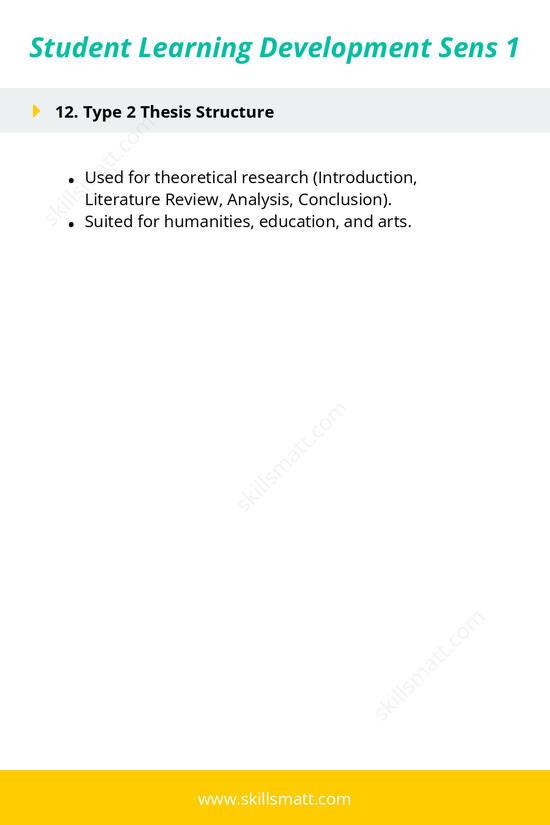Student Learning Development Sens 1
1. Research Models and Methods
- Explore qualitative, quantitative, and mixed methods.
- Understand methodology's impact on research outcomes.
- Evaluate research approach strengths and weaknesses.
2. Developing a Research Proposal
- Outline steps for proposal creation.
- Focus on clear research question and hypothesis.
- Structure proposal (introduction, methods, expected outcomes).
3. Thesis Structure Guidelines
- Common thesis structures (traditional and modern).
- Structure influenced by discipline and methodology.
- Ensure logical flow and coherence.
4. Sample Abstract from Engineering & Biology
- Examples of concise, clear abstracts.
- Key components: purpose, findings, significance.
5. Sample Introduction from Engineering, Biology & Education
- Key components: background, research question, objectives.
- Position research within existing literature.
6. Sample Methods Section from Biology, Engineering & Education
- Structure: participants, materials, procedures, analysis.
- Examples from various disciplines.
7. Sample Results Section from Biology & Education
- Present findings with clarity (tables, figures).
- Ensure objectivity and precision.
8. Sample Discussion Section from Biology
- Connect findings to research question.
- Interpret results, compare with literature.
9. Sample Conclusion from Engineering & Education
- Summarize findings, suggest implications.
- Link back to thesis statement.
10. Thesis Writing and Persuasion
- Develop a strong, evidence-backed argument.
- Ensure critical thinking and clarity.
11. Type 1 Thesis Structure
- Typical for experimental research (Abstract, Introduction, Methods, Results, Discussion, Conclusion).
- Clear presentation of findings and analysis.
12. Type 2 Thesis Structure
- Used for theoretical research (Introduction, Literature Review, Analysis, Conclusion).
- Suited for humanities, education, and arts.




